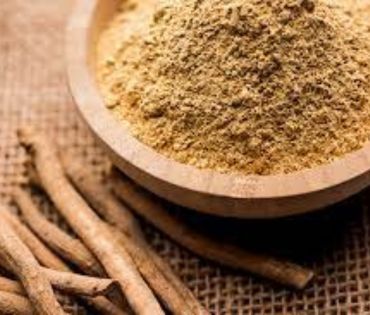The global health and wellness landscape is evolving rapidly, driven by growing consumer interest in preventive healthcare and natural remedies. Central to this trend is the Phytochemicals Industry, a sector focused on extracting and utilizing bioactive compounds from plants. These phytochemicals are nature’s own compounds that may offer various health benefits, from supporting general wellness to potential therapeutic applications. Over the past decade, market observations suggest that phytochemicals are becoming increasingly mainstream. This article provides an overview of the industry, including definitions, applications, market trends, challenges, and future prospects.
1. What Are Phytochemicals? Nature’s Bioactive Compounds
Phytochemicals are naturally occurring chemical compounds produced by plants to protect themselves against pests, fungi, and UV radiation. While not essential nutrients like vitamins or minerals, research indicates they may offer health-promoting properties such as antioxidant, anti-inflammatory, and immune-supportive effects. For more details on general properties of phytochemicals.
1.1. Key Characteristics of Phytochemicals- Bioactive: Interact with biological systems in the body.
- Diverse Structures: Possess a wide variety of chemical structures, resulting in different functions.
- Source-Specific: Concentration and activity can vary based on plant species, cultivation, and processing.
- Synergistic Effects: Multiple phytochemicals may work together to enhance potential health benefits.
Phytochemicals encompass tens of thousands of compounds. Some widely studied categories include:
| Category | Common Sources | Potential Health Benefits |
|---|---|---|
| Flavonoids | Berries, citrus, tea, apples, onions | Antioxidant, anti-inflammatory, cardiovascular support, neuroprotective |
| Carotenoids | Carrots, tomatoes, leafy greens, sweet potatoes | Antioxidant, immune support, eye health (Vitamin A precursor) |
| Phenolic Acids | Coffee, tea, berries, whole grains | Antioxidant, anti-inflammatory, antimicrobial |
| Organosulfur | Garlic, onions, broccoli, cabbage | Detoxification support, immune support, potential anti-cancer effects |
| Glucosinolates | Broccoli, cabbage, kale, Brussels sprouts | Detoxification support, potential anti-cancer properties |
| Alkaloids | Coffee (caffeine), poppies (morphine) | Pharmacological effects, CNS stimulant/depressant, pain relief |
| Terpenes/Terpenoids | Citrus, cannabis (CBD), essential oils | Anti-inflammatory, antioxidant, antimicrobial, potential anti-cancer (e.g., Limonene, CBD) |
2. Phytochemicals Market: Trends and Drivers
The global phytochemicals market is growing steadily. According to Grand View Research, the market was valued at over US$ 7,146.2 Million in 2024 and is expected to reach US$ 17,800 Million by 2034, with a projected CAGR of 9.6% [source].
2.1. Key Market Drivers- Health Awareness: Consumers increasingly seek preventive healthcare and natural solutions.
- Functional Foods & Beverages: Phytochemicals are added to juices, yogurts, cereals, and energy drinks for potential health benefits.
- Natural Cosmetics: 'Clean beauty' trends drive plant-based ingredients in skincare, haircare, and personal care.
- Pharmaceutical & Nutraceutical Applications: Phytochemicals serve as active ingredients in dietary supplements and traditional medicines.
- Advanced Extraction Technologies: Techniques like supercritical fluid and ultrasound-assisted extraction improve yield and purity (Green Chemistry).
- Favorable Regulatory Frameworks: Clearer guidelines for natural ingredients are increasing market confidence.
- By Type: Flavonoids, carotenoids, phenolic acids, terpenes, alkaloids, etc.
- By Application: Food & beverages, pharmaceuticals & nutraceuticals, cosmetics & personal care, animal feed, and agrochemicals.
3. Applications Across Industries
3.1. Food & Beverages- Natural Preservatives: Rosemary extract may extend shelf life of oils and meats (antioxidant properties).
- Natural Colorants: Carotenoids provide natural yellow-orange hues.
- Health-Enhancing Additives: Flavonoids and gingerols are used to potentially support antioxidant and digestive health.
- Natural Sweeteners: Stevia offers a plant-based, calorie-free option (IFT resource).
- Drug Discovery: Many drugs originate from plants (e.g., aspirin from willow bark, paclitaxel from Pacific yew) (NCCIH).
- Herbal Medicines & Supplements: Phytochemicals are used in both traditional and modern formulations.
- Disease Management: Research continues into supporting chronic conditions like diabetes, cardiovascular disease, and neurological disorders.
- Anti-aging & Antioxidants: Flavonoids and carotenoids combat oxidative stress.
- Anti-inflammatory: Curcumin and chamomile extracts soothe skin.
- Natural Fragrances & Preservatives: Essential oils and plant extracts replace synthetic chemicals.
- Hair & Scalp Care: Aloe vera, green tea, and berry extracts are commonly used.
- Agriculture: Natural pesticides and herbicides from plants.
- Animal Feed: Phytochemicals may support growth and health, reducing the need for antibiotics.
4. Challenges and Opportunities
4.1. Challenges- Standardization and quality control due to plant variability.
- Low bioavailability of certain compounds.
- Regulatory complexity across regions (CRN guidance).
- Supply chain and sustainability concerns.
- Costly extraction and purification processes.
- Public skepticism and misinformation.
- Personalized nutrition with genomics and AI.
- Advanced green extraction techniques for higher purity.
- Biotechnology for scalable phytochemical production.
- Discovery of novel plant compounds with health potential.
- Digital traceability to ensure ethical sourcing.
- Development of synergistic phytochemical blends.
5. Future Outlook
- Integration into mainstream healthcare for preventive and adjunctive therapies.
- Research into gut microbiome interactions.
- Emphasis on sustainable and ethical sourcing.
- AI-driven discovery and process optimization.
- Controlled environment agriculture for consistent yields.
- Consumer education and transparent labeling to build trust.
The phytochemicals industry is positioned to move from niche interest to a cornerstone of global health and wellness, harnessing plant-based compounds for a more sustainable and health-focused future.
FAQ
Q1: What are Phytochemicals?A1: Plant-derived bioactive compounds that may offer antioxidant, anti-inflammatory, and other health-supporting properties.
Q2: What is the main function of the phytochemicals industry?A2: Extracts and incorporates phytochemicals into functional foods, supplements, pharmaceuticals, and cosmetics.
Q3: What is the future of the phytochemicals industry?A3: Strong growth is expected, driven by natural health demand, technological advancements, and AI-assisted discovery.
Q4: Are phytochemicals natural products?A4: Yes, they are plant-derived and naturally occurring.
Q5: Difference between phytochemicals and vitamins?A5: Vitamins are essential nutrients; phytochemicals are non-essential compounds that may still offer health benefits.
Q6: Common sources?A6: Fruits, vegetables, legumes, whole grains, nuts, seeds, tea, and coffee.
Q7: How is quality control managed?A7: Through standardized extraction, purity testing, and potency verification.
*These are not claims; kindly study and verify before processing.





